Topics of Syllabus :
♦ Projectile & factors affecting projectile trajectory
♦ Newton's laws of motion and their application in sports
♦ Aerodynamics principles
♦ Friction & Sports
♦ Introduction to Axes And Plane
♦ Types of movements ( Flexion, Extension, Abduction, Adduction)
♦ Major muscle involved in Running , Jumping And Throwing
8.1 Projectile :
Projectile: an object thrown into the space either horizontally or at acute angle under the action of gravity is called a projectile. The path followed by a projectile is called it's trajectory and it is parabolic path. Two forces act on it gravitational force and air resistance.
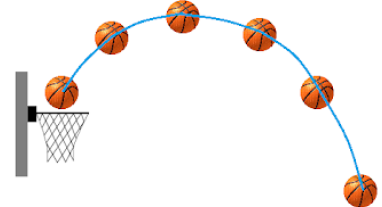
In the field of games and sport there are many examples of projectiles such as putting the shot, throwing a hammer, discus and javelin in athletics.
Factors affecting projectile trajectory :

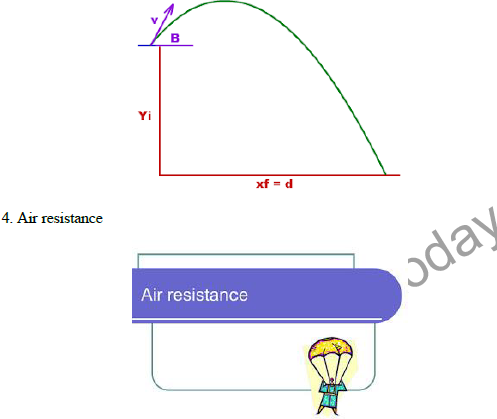
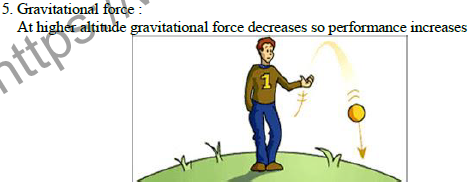
8.2 Newton’s laws of motion and their application in the field of sports :
The three laws of motion formulated by Newton are described below
1. Law of inertia:
According to this law a body at rest will remain at rest and a body in motion will remain in motion at the same speed and in the same direction unless acted upon by an external force.
There are great examples of this law in sports such as starting in rowing,
starting in sprinting, starting in throwing the hammer. Basically if an object is in motion, it remains in motion unless something or some external force stops it. The external force may be gravitational force, the surface of playing field or a defensive player etc.For Ex: Starting in sprinting, starting in rowing, starting in hammer throw.
2. Law of acceleration:
According to this law, A change in motion (acceleration) is directly proportional to the force producing it and inversely proportional to its mass. If two unequal forces are applied to objects of equal mass, the object that has greater force applied will move faster.
Conversely, if two equal forces are applied to objects of different masses, the lighter mass will travel at a faster speed. eg. in hammer throw, a thrower who is stronger will throw the hammer farther than a thrower who is less stronger.
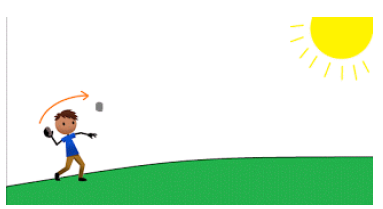
3. Law of reaction:
According to this law ‘ For every action there is an equal and opposite reaction.’ There are so many examples in sports where this law is applied. e.g.,
In swimming a swimmer pushes the water backwards (action) and the water pushes the swimmer forward (reaction) with the same force. In swimming, a swimmer pushes the water backwards(action). The water pushes the swimmer forward( reaction) with the same force.
8.3 Aerodynamics :
Aerodynamics is the study of properties of moving air and the interaction between the air and solid bodies moving between it.
The basic forces of aerodynamics are stated below:
Lift: lift is the force that pushes the object to move upward. It is the force that is the opposite of weight.
Weight: Weight is the force generated by the gravitational force of the earth. The weight of an object controls how strong the push has to be. A shot of 16 pounds requires more force (push) than a javelin.
Drag: Drag is a force that tries to slow the object down. It makes hard for an object to move.
It is harder to walk through the water than through the air. It is because water causes more drag than air.
Thrust: Thrust is a force that is the opposite of drag. Thrust is the push that moves some objects forward.
8.4 Friction and its types:
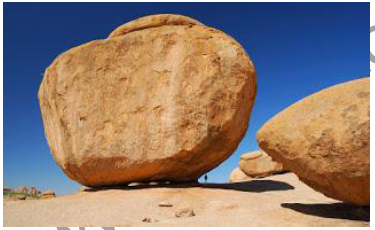
The force acting along two surfaces in contact which oppose\ the motion of one body over the other is called the force of friction. It is very important in sports.
When both the surfaces are smooth, the force of friction reduces to almost zero.
Three types of friction are
(i) Static Friction :
The opposing force that comes into picture when one body tends to move over the another surface but the actual motion has not yet started.
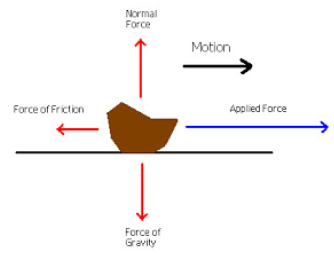
(ii) Limiting Friction :
Limiting friction is the maximum of thing force that comes into play when one body is just on the verge of moving over the surface of another body.
iii) Kinetic Friction :
Kinetic friction is the opposing force at comes into play when one body is actually moving over the surface of another body.
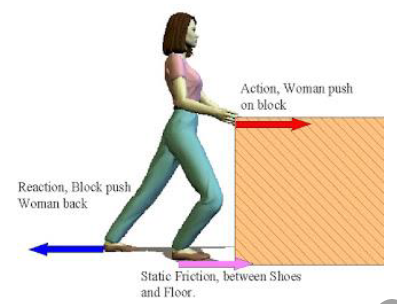
8.5 Axes & Plane :
Plane is an imaginary, flat surface passing through the body organ or plane is the surface on which the movement occurs.
There are following types of planes:
a) Sagittal or Medial plane:
The sagittal plane is a vertical plane passing from the rear to the fronty, dividing the body into left and right halves. It is also known as anteroposterior plane.
Most of the sports and exercise movements that are two dimensional, such as running, long jumping and somersault take place in this plane.
b) Frontal or Coronal plane:
the frontal plane is also vertical and passes from left to right dividing the body into posterior to anterior halves. It is also known as coronal plane.
Frontal plane cuts the body into front and back. Movements along the frontal plane can include cartwheel and star jumps.
c) Transverse or Horizontal plane:
The transverse plane divides the body into top and bottom halves. In fact, it divides the body into upper and lower sections. This plane lies horizontally that why it is also called horizontal plane. Movements along this plane can include an ice skating spin or rotation to play a tennis shot.
An axis is a straight line around which an object rotates. Movements at the joints of human muscoskeletal system are mainly rotational and take place about a line perpendicular to the plane in which they occur. This line is known as axis of rotation.
There are following types of axes of rotation:
a) Sagittal axis:
The sagittal axis passes horizontally from posterior to anterior. It is formed by the intersection of the sagittal and transverse plane. Sagittal axis passes from front to back.
b) Frontal axis:
The frontal axis passes horizontally from left to right. It is formed by the intersection of frontal and horizontal plane. Frontal axis passes from side to side.
c) Vertical axis:
The vertical axis passes vertically from inferior to superior. It passes straight through the top of the head down between feet. It is formed by the intersection of sagittal and frontal plane. It is also known as longitudinal axis. It is the longest axis.
8.6 Types of movements :
a) Flexion: Bending parts at a joint so that the angle between them decreases and parts come closer together (bending the lower limb at the knee).
b) Extensions: Straightening parts so that the angle between them increases and parts moves farther apart (straightening the lower limb at the knee).
c) Abduction means moving a part away from the midline (lifting the upper limb horizontally to form a right angle with the side of the body))
d) Adduction means moving a part towards the midline ( returning the upper limb from the horizontal position to the side of the body).
8.7 Major muscles involved in running, jumping & throwing :
The major muscles involved in running are described below:
Glutes: these muscles stabilize your hips and legs. These muscles work with hamstring muscles and help in hip flexors.
Quads: Quads propel you forward and help straighten out the leg in front so that it can make a good contact with the surface of ground.
Calves: these muscles give you spring in your step and at the same time these muscles act as shock absorbers.
Hamstrings: As you move forward, the action switches to your hamstrings, the muscles at the back of your thigh muscles. These muscles helps you in pulling the leg back behind and give you strength to propel your body forward.
Core muscles: Strong abs and back are really important because they keep yours posture upright and overall form good. These muscles play a significant role in running.
Biceps: biceps also play a vital role in running. Biceps maintain a bent arm and help in swinging your arms back and forth while running.
The major muscles involved in jumping are described below:
The leg, feet and gluteus muscle groups are used in jumping.
In fact, jumping occurs in three stages.
The first stage is the preparatory stage where ankle muscles calf muscles and soleus tense to prepare launching.
The second phase is the launch phase, where hip extensors, the hamstrings and gluteus maximus combine and the knee extensors extend the knees to allow the body to launch into the air.
In the last stage is the landing phase where all the muscles embrace impact and allow the body to return to a resting position.
The major muscles are pectorials, major, latissimus dorsi, anterior deltoid and teres major are involved in throwing. These muscles are comparatively responsible for velocity during the throw. The pectorials major is the large muscle in the chest and latissimus dorsi are the large muscles on each side of the back.
Deltoid, biceps, triceps are also involved in throwing a javelin in athletics.

